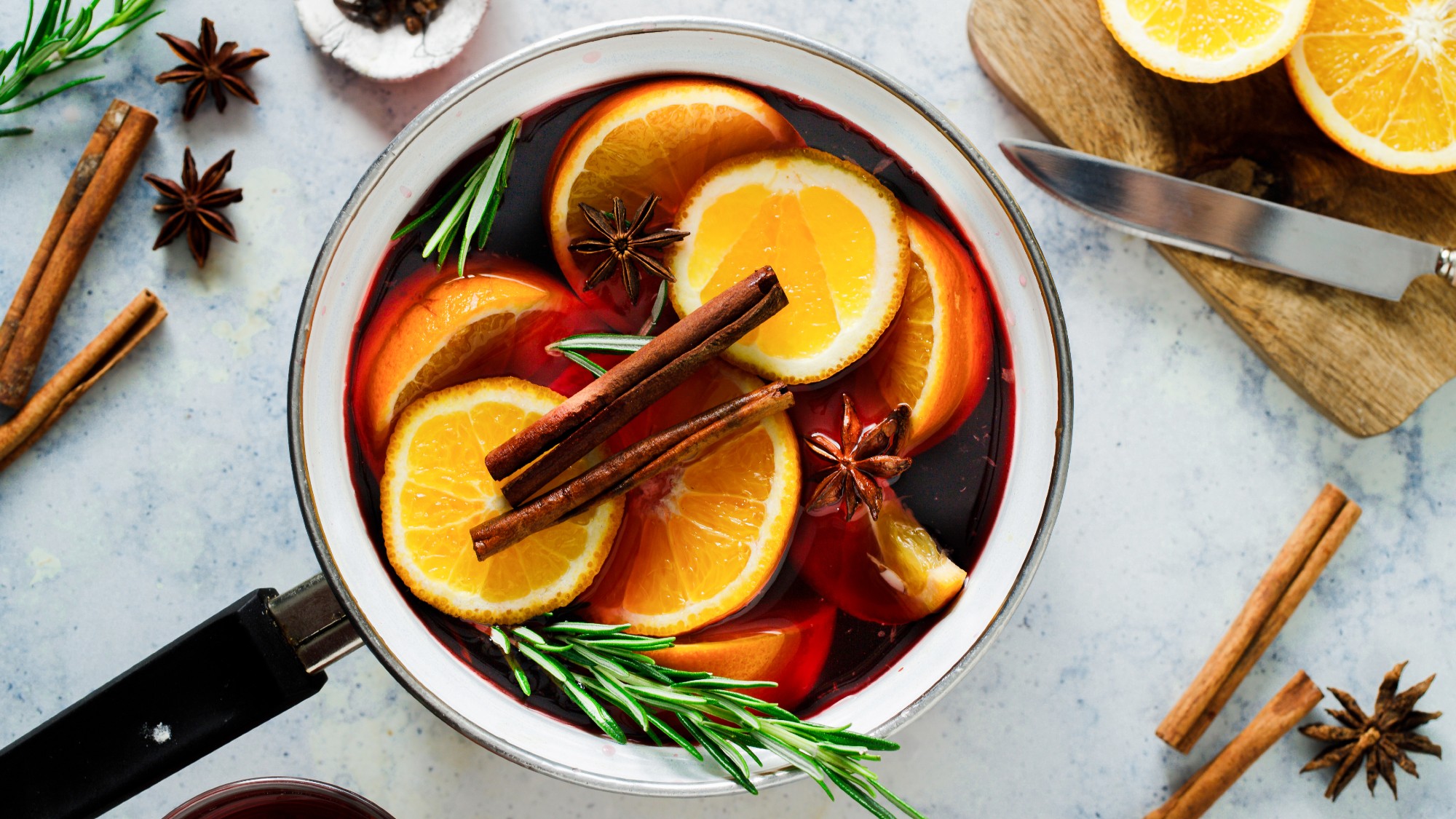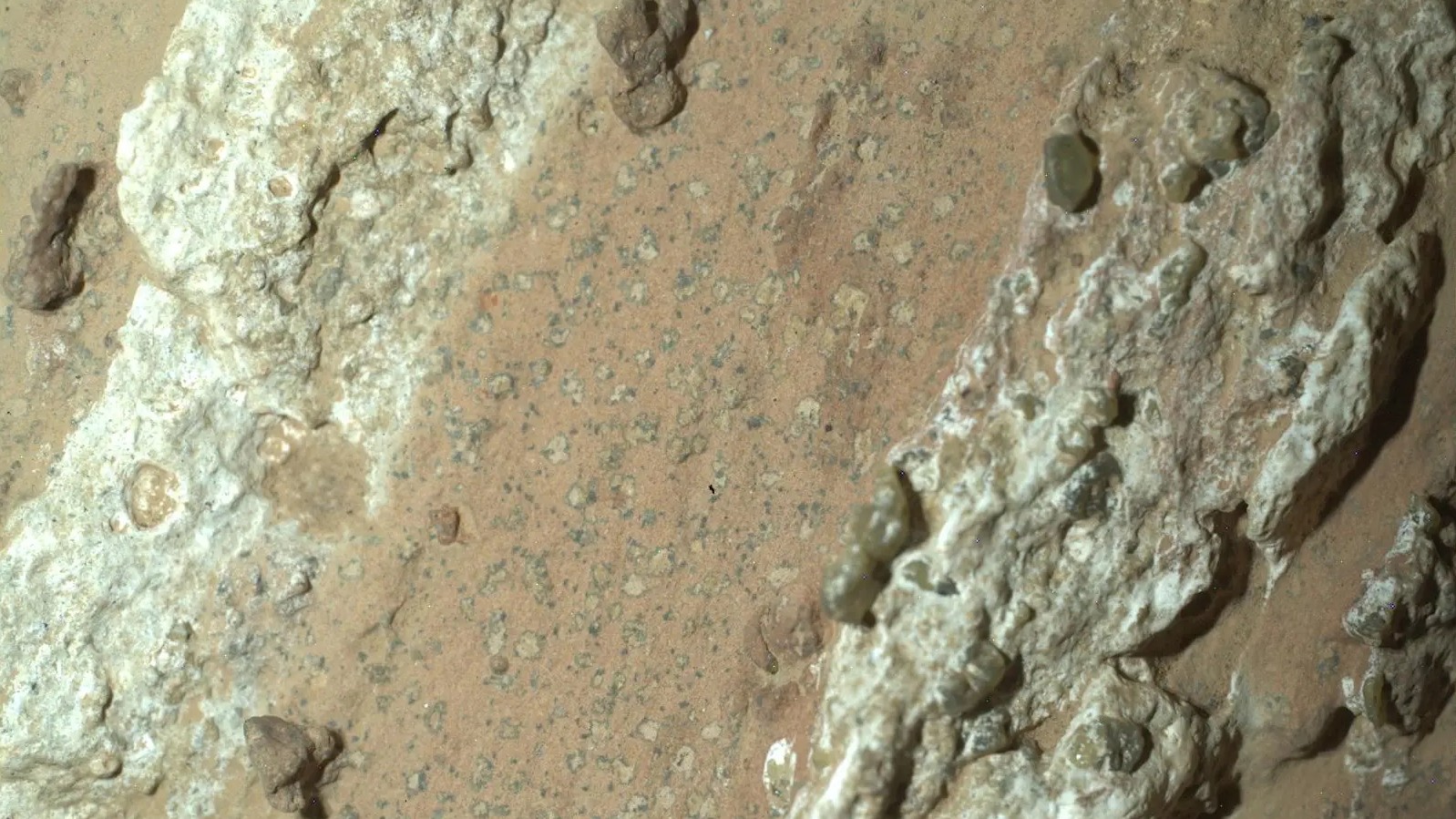Nasa's 'strangest find': pure sulphur on Mars
Curiosity rover discovers elemental sulphur rocks, adding to 'growing evidence' of life-sustaining elements on Red Planet

Nasa's Mars rover has made its "most unexpected" discovery since it landed on the red planet in 2012: rocks made of sulphur.
On 30 May, the Curiosity rover "happened to drive over a rock and crack it open, revealing yellow-ish green crystals", said CNN. Nasa used the robot's instruments to analyse the rock, receiving data that indicated it was pure sulphur. Scientists were "stunned", said Nasa when it revealed the discovery last week.
"Finding a field of stones made of pure sulphur is like finding an oasis in the desert," said Ashwin Vasavada, Curiosity's project scientist at Nasa's Jet Propulsion Laboratory in Southern California. It's the "strangest find" and "most unexpected" of Curiosity's 12 years on Mars.
The Week
Escape your echo chamber. Get the facts behind the news, plus analysis from multiple perspectives.

Sign up for The Week's Free Newsletters
From our morning news briefing to a weekly Good News Newsletter, get the best of The Week delivered directly to your inbox.
From our morning news briefing to a weekly Good News Newsletter, get the best of The Week delivered directly to your inbox.
Previous research has suggested that pure sulphur "may have played a key role in the origin of life on Earth", said the Daily Mail. Now scientists are trying to establish what its presence can tell us about the red planet's past. But the discovery adds to the "growing evidence of other life-sustaining elements identified on Mars".
Curiosity's Mars mission
In November 2011, Nasa launched the Mars Science Laboratory (MSL) mission from Florida with the Curiosity rover aboard – the fourth Nasa robot sent to Mars since 1996, and at the time the largest and most capable. Its main goal was to determine whether the planet could have once supported life.
Weighing almost a tonne and approximately the size of a car, Curiosity landed successfully on Mars's Gale Crater the following August. The six-wheeled scientist transmitted its first images on 6 August 2012, showing its shadow on the red planet's surface.
Since 2014, Curiosity has been ascending Mount Sharp, a three-mile-high central peak in the crater. Each layer of the mountain "represents a different period of Martian history", said Nasa.
A free daily email with the biggest news stories of the day – and the best features from TheWeek.com
Curiosity has already found organic deposits trapped in mudstone that once contained organic molecules. That suggests that life could have existed on ancient Mars – although it doesn't prove it.
This year, the rover arrived at the Gediz Vallis channel, a winding groove carved into a steep side of the mountain and long observed from Earth. Scientists believe the channel was carved by liquid water and debris 3 billion years ago. It is "one of the primary reasons the science team wanted to visit this part of Mars", said Nasa. There's "much to learn from the dramatic landscape".
In February, the rover took photos of "waves" carved into "an ancient lakebed by Martian water millions of years ago", said LiveScience. And in May it found rocks containing manganese oxide – "the best evidence yet that the Red Planet once had an oxygen-rich, Earth-like atmosphere".
Pure sulphur 'shouldn't be there'
Curiosity has already found sulphur-based minerals – a mix of sulphur and other elements in compounds known as sulphates. But this newly discovered rock is made of elemental, or pure sulphur. "No one had pure sulphur on their bingo card," said Vasavada.
Pure sulphur rocks are typically found in hydrothermal vents on Earth. They form in a "narrow range" of conditions, such as volcanic activity or springs, said Nasa.
"Think Yellowstone!" said Briony Horgan, co-investigator on the Perseverance rover mission and professor of planetary science at Purdue University in West Lafayette, Indiana. That makes pure elemental sulphur a "very weird finding" on Mars, she told CNN.
"My jaw dropped when I saw the image of the sulphur," she said. It's a "big mystery to me as to how this rock formed in Mount Sharp".
Curiosity also "found a lot of it", said Nasa: "an entire field of bright rocks that look similar to the one the rover crushed".
Scientists aren't sure how it formed, or whether it has "any connection to other sulphur-based minerals previously discovered in the region", said Space.com.
Pure sulphur "shouldn't be there, so now we have to explain it", said Vasavada. "Discovering strange and unexpected things is what makes planetary exploration so exciting."
Harriet Marsden is a senior staff writer and podcast panellist for The Week, covering world news and writing the weekly Global Digest newsletter. Before joining the site in 2023, she was a freelance journalist for seven years, working for The Guardian, The Times and The Independent among others, and regularly appearing on radio shows. In 2021, she was awarded the “journalist-at-large” fellowship by the Local Trust charity, and spent a year travelling independently to some of England’s most deprived areas to write about community activism. She has a master’s in international journalism from City University, and has also worked in Bolivia, Colombia and Spain.
-
 Received a windfall? Here is what to do next.
Received a windfall? Here is what to do next.The Explainer Avoid falling prey to ‘Sudden Wealth Syndrome’
-
 How to save more for retirement next year
How to save more for retirement next yearthe explainer Secure yourself a suitable nest egg
-
 7 hot cocktails to warm you across all of winter
7 hot cocktails to warm you across all of winterthe week recommends Toddies, yes. But also booze-free atole and spiked hot chocolate.
-
 Blue Origin launches Mars probes in NASA debut
Blue Origin launches Mars probes in NASA debutSpeed Read The New Glenn rocket is carrying small twin spacecraft toward Mars as part of NASA’s Escapade mission
-
 ‘The Big Crunch’: why science is divided over the future of the universe
‘The Big Crunch’: why science is divided over the future of the universeThe Explainer New study upends the prevailing theory about dark matter and says it is weakening
-
 Dinosaurs were thriving before asteroid, study finds
Dinosaurs were thriving before asteroid, study findsSpeed Read The dinosaurs would not have gone extinct if not for the asteroid
-
 The moon is rusting
The moon is rustingUnder the radar The Earth is likely to blame
-
 Panspermia: the theory that life was sent to Earth by aliens
Panspermia: the theory that life was sent to Earth by aliensUnder The Radar New findings have resurfaced an old, controversial idea
-
 Africa could become the next frontier for space programs
Africa could become the next frontier for space programsThe Explainer China and the US are both working on space applications for Africa
-
 NASA reveals ‘clearest sign of life’ on Mars yet
NASA reveals ‘clearest sign of life’ on Mars yetSpeed Read The evidence came in the form of a rock sample collected on the planet
-
 Canyons under the Antarctic have deep impacts
Canyons under the Antarctic have deep impactsUnder the radar Submarine canyons could be affecting the climate more than previously thought